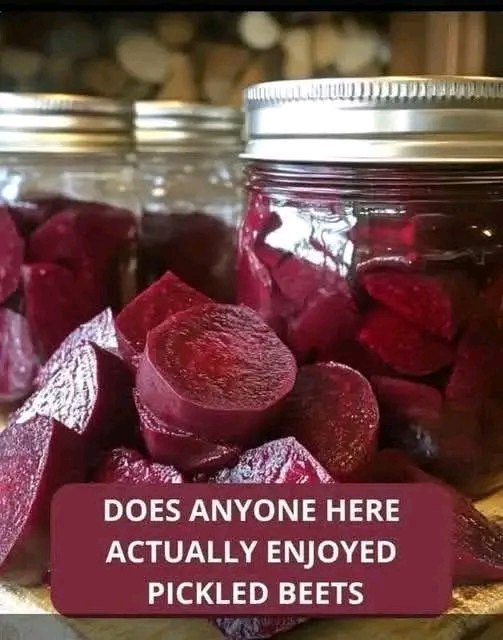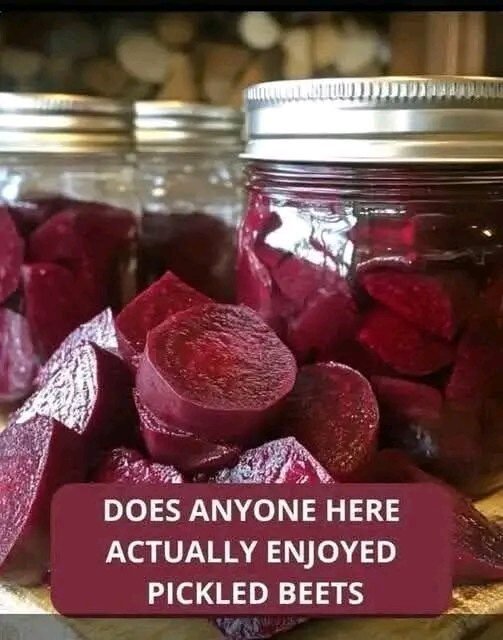Ingredients Overview
To make about 4 pints (8 cups) of pickled beets, you will need:
- 3 pounds (1.4 kg) fresh beets, trimmed and scrubbed
- 2 cups (480 ml) white vinegar (5% acidity)
- 1 cup (240 ml) apple cider vinegar
- 1 ½ cups (300 g) granulated sugar
- 1 cup (240 ml) water
- 1 teaspoon salt
- 1 cinnamon stick (optional)
- ½ teaspoon whole cloves
- ½ teaspoon mustard seeds
- ½ teaspoon black peppercorns
- 2 bay leaves
Each of these ingredients contributes to the distinctive character of the brine — balancing acidity, sweetness, and spice.

Selecting the Best Beets
The best pickled beets start with the best fresh beets. Look for small to medium-sized bulbs with smooth skins and vibrant greens. Avoid large, woody beets, as they tend to be tougher and less flavorful. Red beets are traditional, but golden or striped Chioggia beets can add a gourmet twist to your jars.
Preparing the Beets
Begin by trimming off the beet greens, leaving about one inch of stem. This helps prevent bleeding during boiling. Scrub them thoroughly under cold running water to remove any dirt or grit, but do not peel yet — the skins will slip off easily after cooking.
Cooking the Beets
Place the beets in a large pot and cover with water. Bring to a boil, then reduce to a simmer and cook for 30–40 minutes, or until a fork easily pierces the largest beet. Drain the beets and allow them to cool until comfortable to handle. Then, gently rub off the skins using your fingers or a paper towel.
Slicing and Preparing for Pickling
Cut the beets into your desired shape — slices, wedges, or small cubes. Uniform pieces ensure even absorption of the pickling brine. For a rustic look, consider leaving small beets whole if they’re less than two inches in diameter.
Preparing the Pickling Brine
In a large saucepan, combine both vinegars, sugar, water, salt, and spices. Bring the mixture to a gentle boil, stirring occasionally until the sugar dissolves completely. Let it simmer for 5 minutes to allow the spices to infuse the brine with warmth and complexity.
Packing the Jars
Sterilize 4 pint-sized canning jars and their lids by boiling them in water for 10 minutes. Carefully pack the sliced beets into the hot jars, leaving about ½ inch of headspace at the top. Remove the cinnamon stick and bay leaves from the brine before pouring.
Adding the Hot Brine
Pour the hot vinegar brine over the beets, ensuring that all pieces are submerged. Run a clean knife or skewer around the inside of each jar to remove any trapped air bubbles. Wipe the rims with a damp cloth, then seal tightly with sterilized lids.
Processing and Sealing
To ensure safe preservation, process the jars in a boiling water bath for 30 minutes (adjusting for altitude if necessary). Remove carefully and place on a towel-lined surface to cool undisturbed for 12–24 hours. Listen for the satisfying “pop” as the lids seal.
Storing the Pickled Beets
Once cooled, check that each lid is properly sealed — it should not flex when pressed. Label your jars with the date and store them in a cool, dark place. For best flavor, let the pickled beets sit for at least two weeks before opening to allow the flavors to fully mature.
Flavor Variations
You can personalize your pickled beets with different herbs and spices:
- Spiced Pickled Beets: Add allspice, cloves, or star anise for warmth.
- Citrus Beets: Add strips of orange zest to the brine.
- Savory Beets: Include garlic cloves or sprigs of dill.
- Honey Beets: Substitute part of the sugar with honey for a floral sweetness.
How to Serve Pickled Beets
Pickled beets are wonderfully versatile. Serve them chilled as a side dish with roasted meats, toss them into salads with goat cheese and arugula, or layer them in sandwiches for a tangy crunch. They’re also excellent with deviled eggs, smoked fish, or even added to wraps.
Nutritional Benefits
Beets are rich in antioxidants, fiber, iron, and folate. Pickling preserves many of these nutrients while adding probiotic benefits if fermented naturally. However, be mindful of the sugar content — balance your diet accordingly.
Common Mistakes to Avoid
- Overcooking beets — this can make them mushy.
- Using non-canning vinegar — ensure acidity is at least 5%.
- Skipping sterilization — bacteria can spoil the batch.
- Not removing air bubbles — can lead to improper sealing.
Attention to detail guarantees a safe, shelf-stable product.
Shelf Life and Storage Tips
Properly sealed jars can last up to 12–18 months in a pantry. Once opened, refrigerate and consume within 6–8 weeks. Always use a clean utensil to remove beets from the jar to maintain freshness.
Sustainable Kitchen Practices
Don’t discard the beet greens — they’re edible and packed with nutrients. Sauté them with garlic and olive oil for a quick side dish. You can also reuse the pickling brine to marinate boiled eggs or vegetables for extra flavor.
The Cultural Heritage of Pickled Beets
Pickled beets have roots in many global traditions. In Eastern Europe, they are part of hearty winter meals; in the American South, they’re a staple of holiday dinners. This enduring appeal shows that simple, preserved foods can transcend time and culture.

